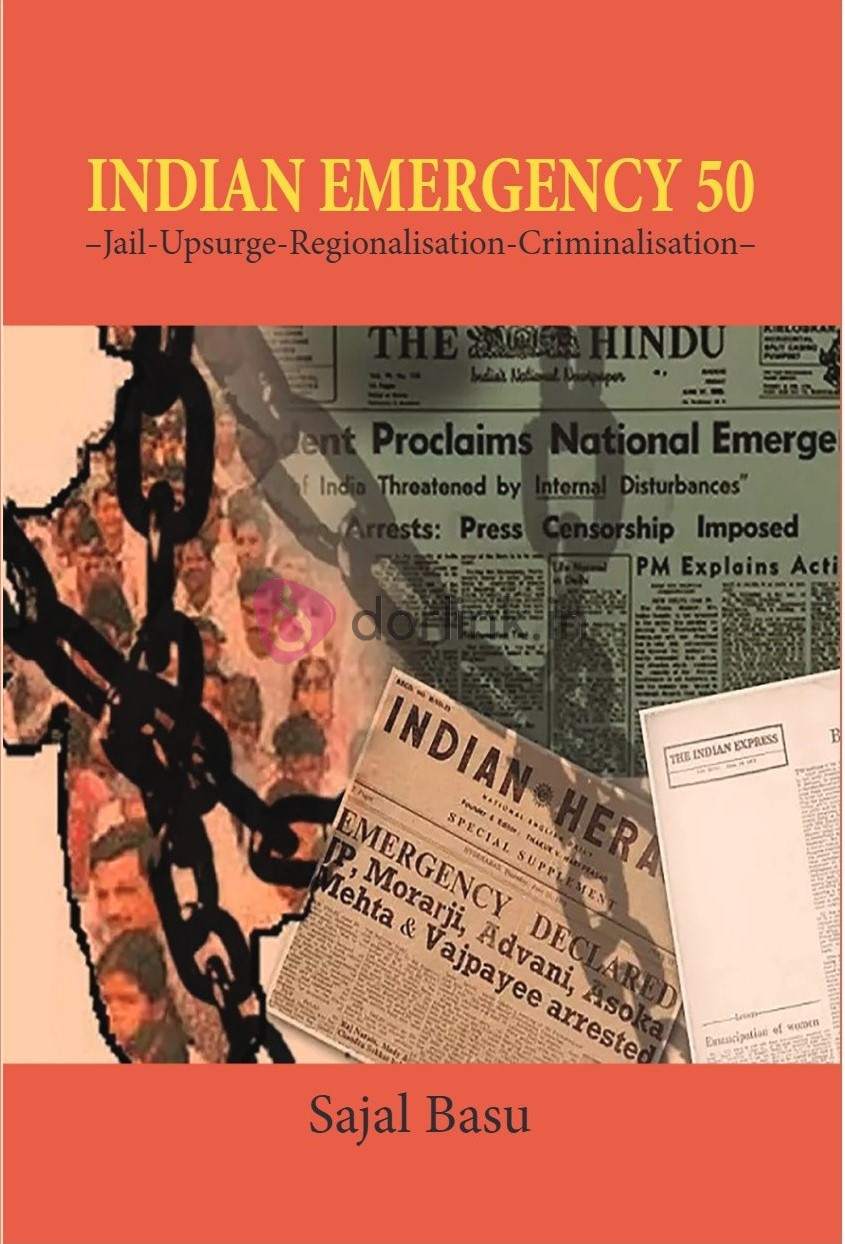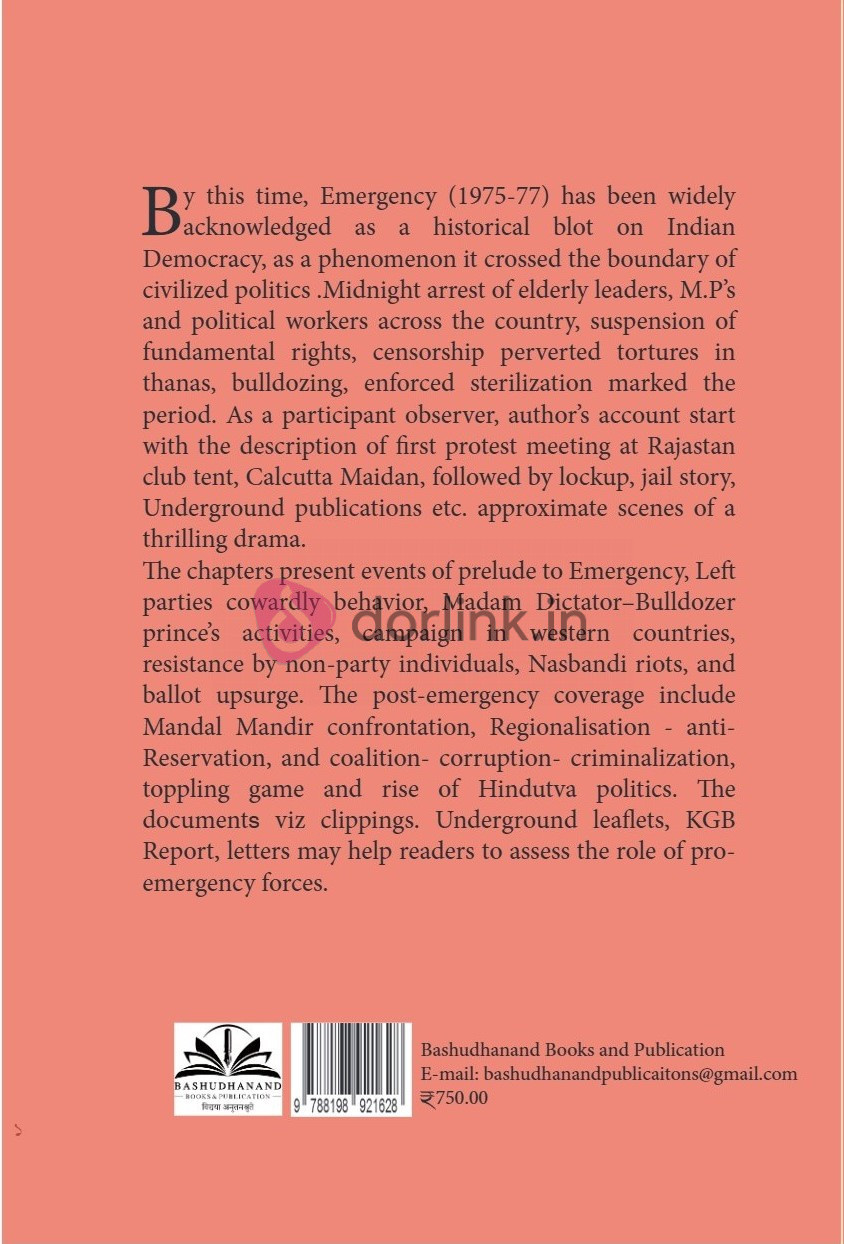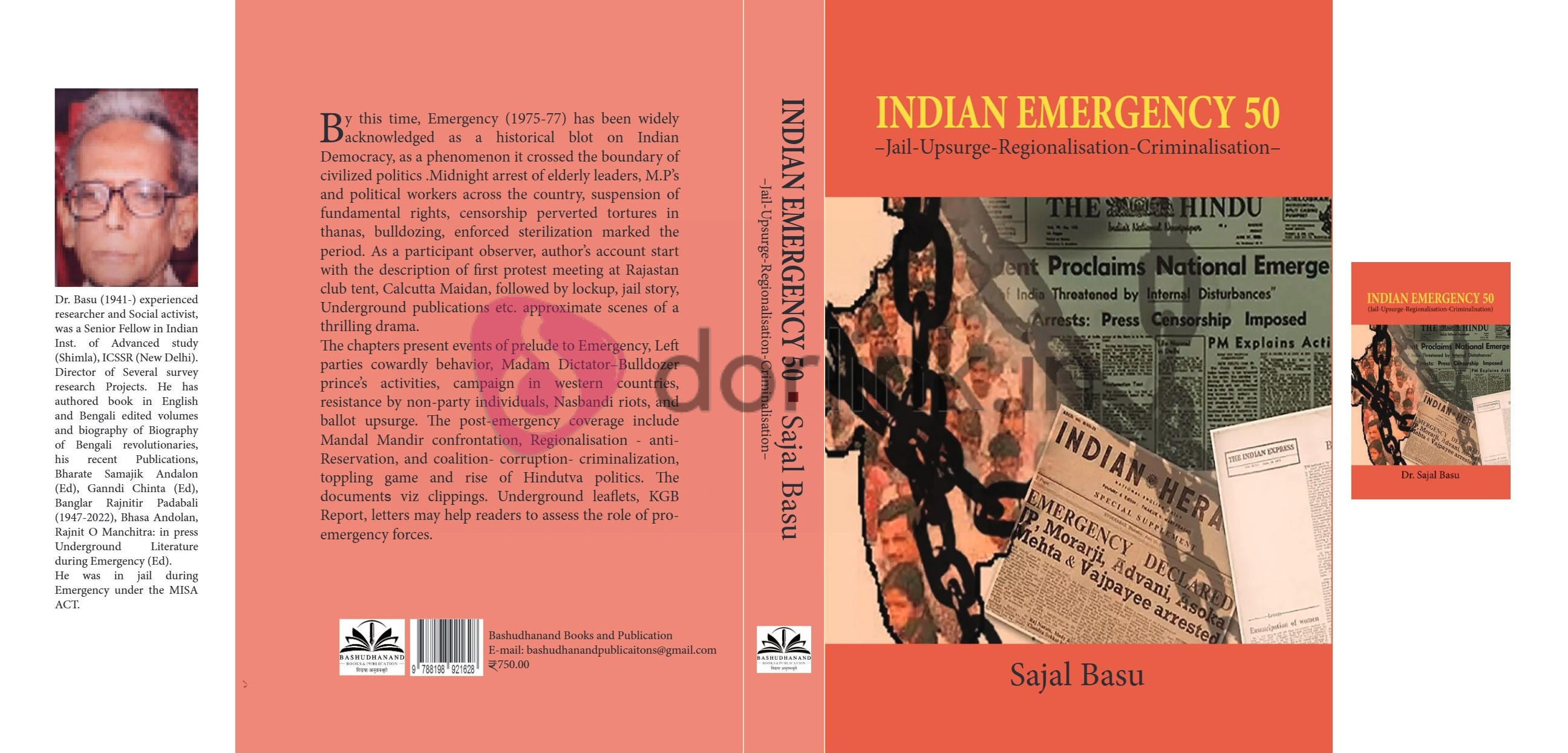Writer : Sajal Basu
- Shipping Time : 10 Days
- Policy : Return/Cancellation?
You can return physically damaged products or wrong items delivered within 24 hours with photo/video proof.
Contact Customer Support for return initiation and receive return authorization via email. Securely package for return.
Refunds for eligible returns are processed within 7-10 business days via Bank Transfer.
Order cancellation allowed within 24 hours of placing it. Standard policy not applicable for undamaged/wrong product cases. Detailed info. - Genre : Essays>Judicial / Political / Legislative System Analysis
- Publication Year : 2025
- ISBN No : 978-81-98921-62-8
- Binding : Paste Board (Hard) with Gel Jacket
- Pages : NA
- Weight : 515 gms
- Height x Width x Depth : 8.5x5.5x01 Inch
If so, it will be notified
About the Book
On 25 June 1975, Prime Minister Indira Gandhi declared a nationwide Emergency under Article 352 of the Constitution, citing a threat to internal security. For 21 months—until 21 March 1977—India’s democratic institutions were suspended: civil liberties were curtailed, MISA arrests skyrocketed, and the press fell under heavy censorship.
Prelude & First Arrests:
This account begins in Kolkata’s Rajasthani Club tent on the Maidan, where the first waves of protest were organized. Overnight, thousands of political activists were detained—including Jayaprakash Narayan, Atal Bihari Vajpayee, L.K. Advani, Morarji Desai, and regional leaders—under the Maintenance of Internal Security Act (MISA)
Lockups, Jail Narratives & Underground Resistance:
Witness harrowing scenes from police stations and jails. Despite tight censorship, underground publications like Bhoomiputra, Satyavani, and Lok Sangharsh circulated eyewitness accounts of police brutality, mass sterilization drives, and forced demolitions—most notably the Turkman Gate incident in Delhi, where bulldozing sparked violent resistance and led to civilian deaths .
The Nasbandi Campaign & State Overreach:
Led by Sanjay Gandhi, a draconian vasectomy campaign was implemented, with slum-dwellers often coerced—threatened with loss of ration cards or relocation. Historical estimates indicate approximately 11 million sterilizations occurred nationwide, and 161,000 in Delhi alone. These coercive actions were extensively documented by the Shah Commission (1977–78), which also documented political arrests, torture, and abuses of power.
Post-Emergency: Regionalisation, Criminalisation & Rise of Coalitions:
Although the Janata Party ousted the Congress in the March 1977 election, the legacy of Emergency persisted. Rajput and Dalit movements saw increasing regionalisation and polarized caste-based politics. Simultaneously, the proliferation of corrupt and criminal elements within political parties became entrenched during coalition governance. The Emergency also indirectly fostered the space for Hindutva ideologies that emerged more prominently in later decades.
What This Book Covers:
- Prelude to Emergency: The Allahabad High Court verdict (12 June 1975) against Indira Gandhi for electoral malpractices—leading to unrest and political agitation
- Protests & Arrests: Campaigns by students, workers, and left parties; the role of journalism and regional political actors.
- Participant-Observer Narratives: First-person accounts of lockups, jail life, and underground leaflet circulation across Kolkata and other cities.
- Drastic State Actions: Bulldozing of slums, enforced sterilization, and suppression of dissent.
- Shah Commission Evidence: Documents revealing torture, misuse of preventive detention, and coercive governance .
- Aftermath & Structural Shifts: Electoral backlash, rise of regional parties, the embedding of criminal elements in politics, and the ideological shift toward Hindutva.
Why This Account Matters:
- By blending vivid personal recollections with rigorous historical data, this book reveals:
- How democracy unraveled in a matter of days.
- The human cost—from jail cells to coerced sterilizations.
- The lasting transformations: political regionalisation, widespread criminalisation, and the advent of coalition and identity politics in post-Emergency India.




